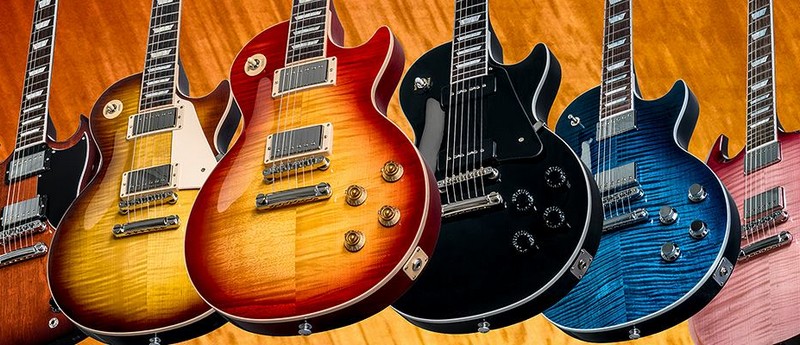It is impossible to imagine recorded music without Gibson guitars. Pick a guitarist, regardless of style or genre, acoustic or electric, and they will have played a Gibson somewhere along the line. Chuck Berry’s sliding introduction to Johnny B Goode? Played on an ES-350T. Jimmy Page’s thunderous riff on Led Zeppelin’s Whole Lotta Love? That’s a Les Paul. A list of Gibson guitar players – from Robert Johnson, Bob Dylan and Neil Young to Sheryl Crow, Dave Grohl and Johnny Marr – reads more like the Rock & Roll Hall of Fame than a brand’s endorsees. Few guitar firms, if any, can quite match Gibson’s blend of heritage, quality of sound, aesthetic beauty and iconic appeal.
But thanks to some terrible business decisions, musicians might soon have to do without their precious Gibsons. The firm, which has been making stringed instruments since 1894 (it wasn’t officially founded until 1902) filed for Chapter 11 bankruptcy this month, to hold off its creditors while it restructures. It had already, last October, downsized by closing its factory in Memphis (two, one in Nashville and the other in Bozeman, Montana, remain).

Research conducted in 2016 by Fender, Gibson’s great rival, found that while 45% of new guitars went to first-time buyers, 90% of them stopped playing within nine to 12 months of getting their first instrument. But the guitar industry bets the farm on players buying six, seven or eight guitars in their lifetimes – crucially, increasingly expensive new guitars. Fender diversified with innovations such as Bluetooth-enabled amps and online tuition tool Fender Play; its CEO Andy Mooney says the company’s sales have increased in the past 10 years, with more women coming to the guitar, something he puts down to the influence of Taylor Swift (an artist often seen with a Gibson).
Gibson’s chair and CEO Henry Juszkiewicz (who in 1986, together with president David Berryman, bought the company for $5m) instead decided to reposition Gibson as a music lifestyle company. It seemed shrewd on paper, but Gibson’s tack – ventures such as Trainer by Gibson, a health-focused brand that worked with Usain Bolt to design headphones; innovations such as the divisive G-Force automatic tuning system; and the purchase of old-school electronics companies TEAC and Stanton – has been calamitous. The upshot is debts of about $375m (£276m).
Lee Anderton runs Andertons in Guildford, a music shop founded by his grandfather and father in 1964. He sells between 1,500 and 2,000 Gibson guitars a year, partly thanks to the strength of his online business, which is buoyed by a 400,000-subscriber YouTube channel. Gibson’s current predicament came as no surprise to him, but he doesn’t believe it sounds any kind of death knell for the guitar industry. “From a personal point of view, I haven’t seen a decline in guitar sales,” he says.
Mark Agnesi is manager of Norman’s Rare Guitars in Los Angeles. While the shop does sell new models, it specialises in the vintage and rare instruments that illustrate the disconnect between Gibson’s past and future. Take the hen’s-teeth rare late-50s sunburst Les Pauls. Only 1,800 were made between 1958 and 1960 – Paul McCartney owns one of only three left-handed versions – and they can now sell for upwards of £200,000. He also sells trucker hats that riff on Donald Trump’s “Maga” slogan, but instead of America, it is Gibson he wants to make great again. Agnesi is confident the company will come through its restructuring strongly.

“Gibson has to figure out what it is,” he says. “If Rolex made a $2,000 watch, it would sell a buttload of them, but that’s not what it wants to be.” The cheapest Rolex retails for about $5,000, and Gibson was always similarly about luxury and aspiration. “The Super 400 was $400 in the middle of the Great Depression, an insane amount of money,” he says. “I would like to see them go back to that high-end market.
“The other thing is corporate greed. Guitar companies like Gibson started as small family concerns and grew into billion-dollar companies, but what for?” he asks. “Why does a guitar company have to be taken public? Ultimately, these firms need to manage expectation. They are chasing 1950s technology, because the product never got any better, and the guitar cannot sustain growth when there are hundreds of thousands of used models out there to buy second-hand. Gibson should just move back to Kalamazoo [Michigan, site of its original factory], make high-quality guitars and pay their workers a decent wage again. They would cost a little more, but everyone would be that bit happier.”
Thanks to myriad digital distractions and changing musical tastes, there are fewer new guitar players coming through, and guitar heroes appear thin on the ground. Furthermore, while wages stagnate, the Gibson Les Paul Standard’s £2,500 price tag remains a significant barrier to most people. That said, the sheer brilliance of the guitar means enough still covet them, even if the company might have to shrink to survive. Don’t bet on hearing Gibson’s last chords just yet.
guardian.co.uk © Guardian News & Media Limited 2010
Published via the Guardian News Feed plugin for WordPress.


